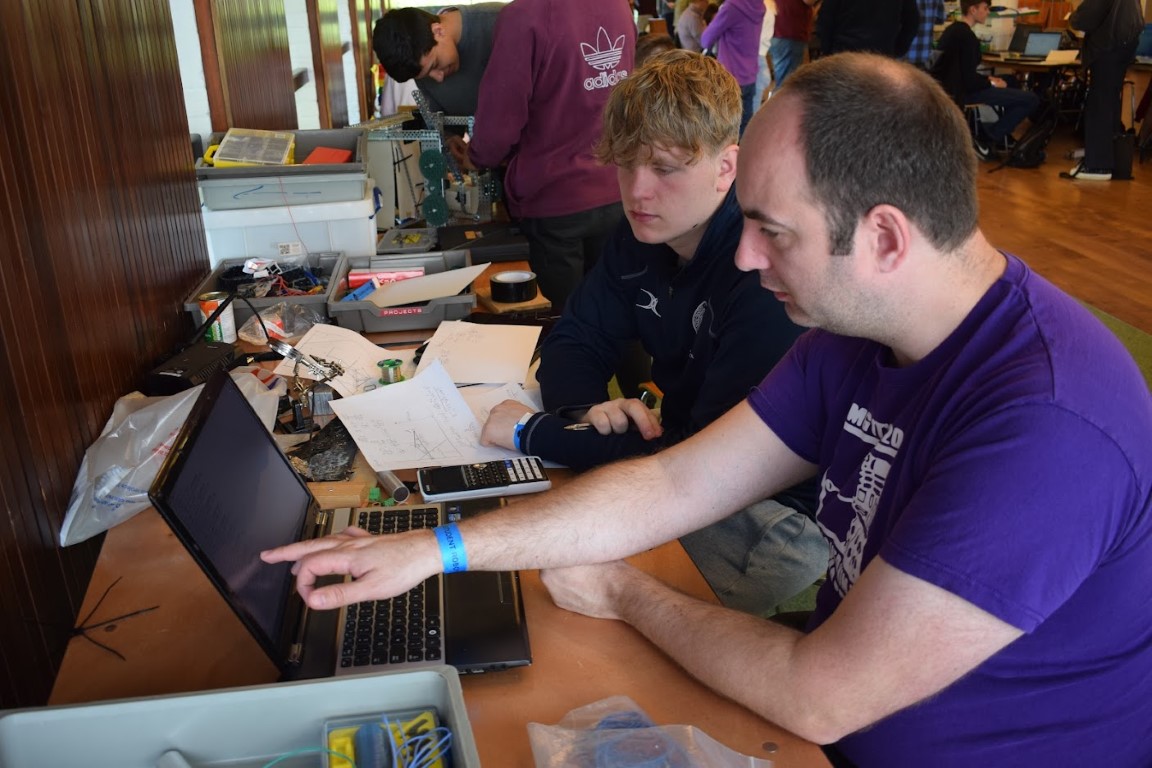The Student Robotics Kit has received an upgrade! Thanks to the generosity of the Institution of Engineering and Technology and the Institution of Mechanical Engineers, we are now using Raspberry Pi computers in our kits. We’ve also developed an add-on board for the Pi (known as the KCH), which provides power to the Pi and several LEDs to indicate a robot’s status.
Raspberry Pis
Previously our kits used an ODROID U3+ as their brain, which served us well for many years. However, difficulties in procurement and teams needing increasing computing power led us to look for alternatives. We settled on using Raspberry Pi 4Bs with 2GB of RAM. These are easier to purchase, offer excellent computing performance, have built in WiFi, and much more.
The KCH
With a new powerful computer at the heart of our kit, we have also designed and built a new add-on HAT called the KCH. Named in memory of a Student Robotics volunteer who sadly passed away in 2020, it serves as a reminder of his love of robotics, innovation, and bees.
The KCH is responsible for powering the Pi and providing output to users regarding the robot’s status. The board has LEDs showing the boot progress of the Pi, indicators for the current status of the code, and most excitingly three user-programmable RGB LEDs. These LEDs provide an easy way to output what your robot is doing at that moment, which can be an invaluable debugging aid.
Take note that the Pi is now powered from the L2 12V port of the Power Board rather than the 5V port. The docs have been updated to state this, but we thought it was worth re-iterating.
Thanks
This kit revision has been made possible by the generosity of the Institution of Engineering and Technology and the Institution of Mechanical Engineers. They selected us as recipients of the Engineering Education Grant Scheme, for which we are incredibly grateful.
The volunteers on our Kit Team also deserve thanks and recognition for their herculean effort to get this revision sorted. A tremendous amount of planning and preparation was needed for this kit revision. There was hardware design, software updates, and cleaning and sorting the existing kit. All while being geographically distributed around the UK (and Europe)!
Student Robotics is 100% free to enter and provides exciting real world engineering challenges for students aged 16-19. If you’re interested in taking part, you can find out more on our Compete page. If you’re interested in becoming a volunteer, you can find more information and sign up on our Volunteer page.

